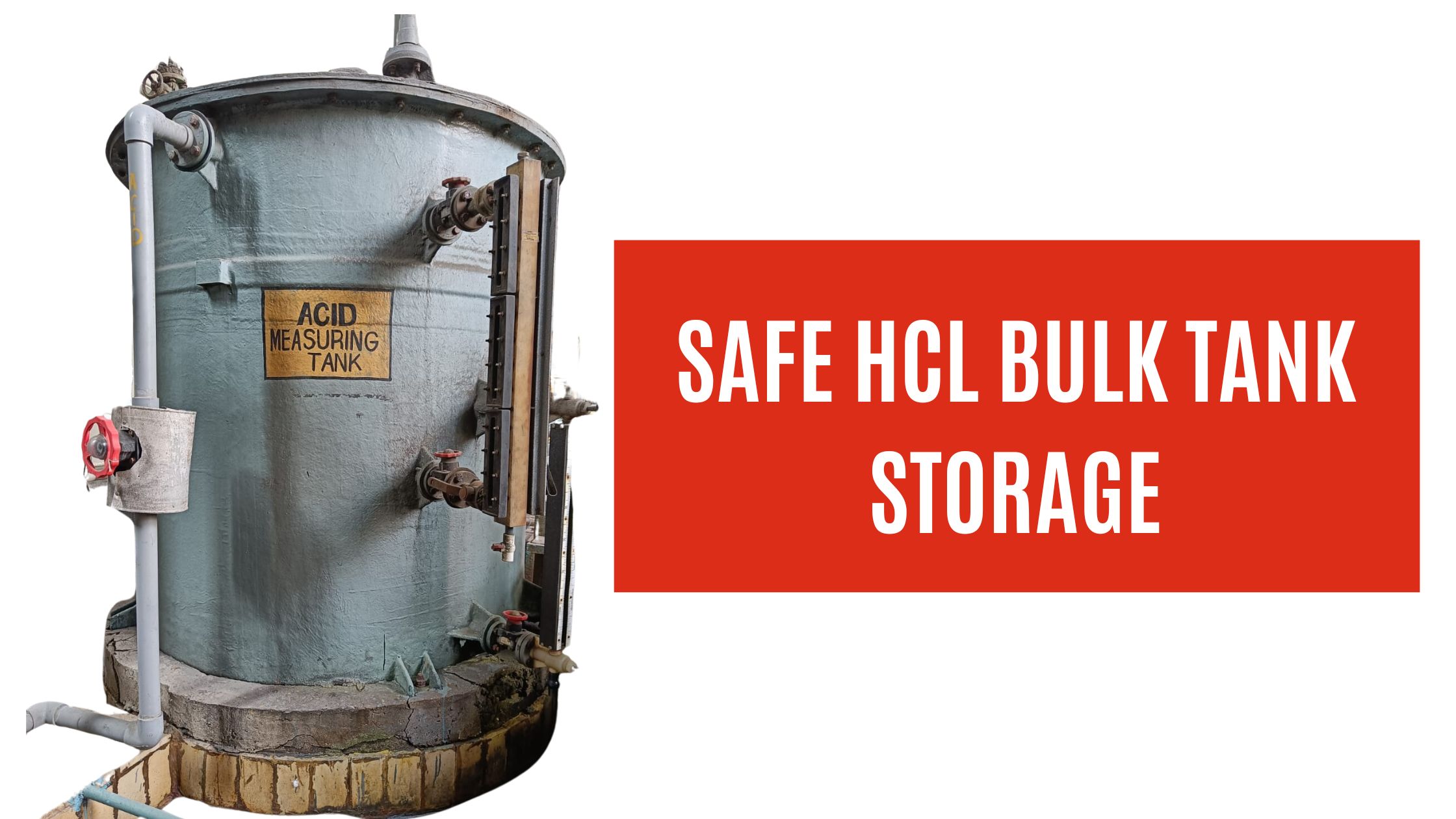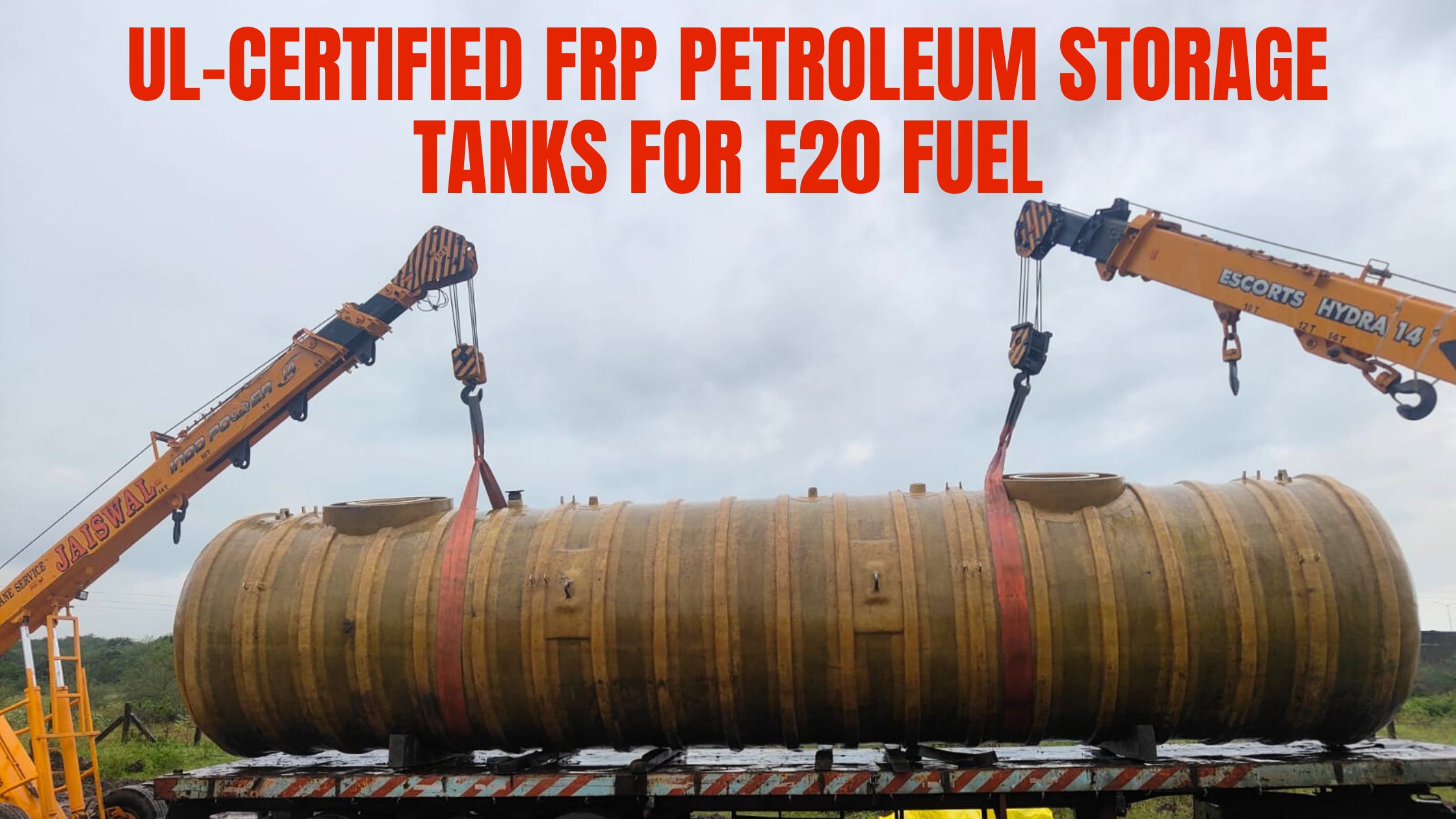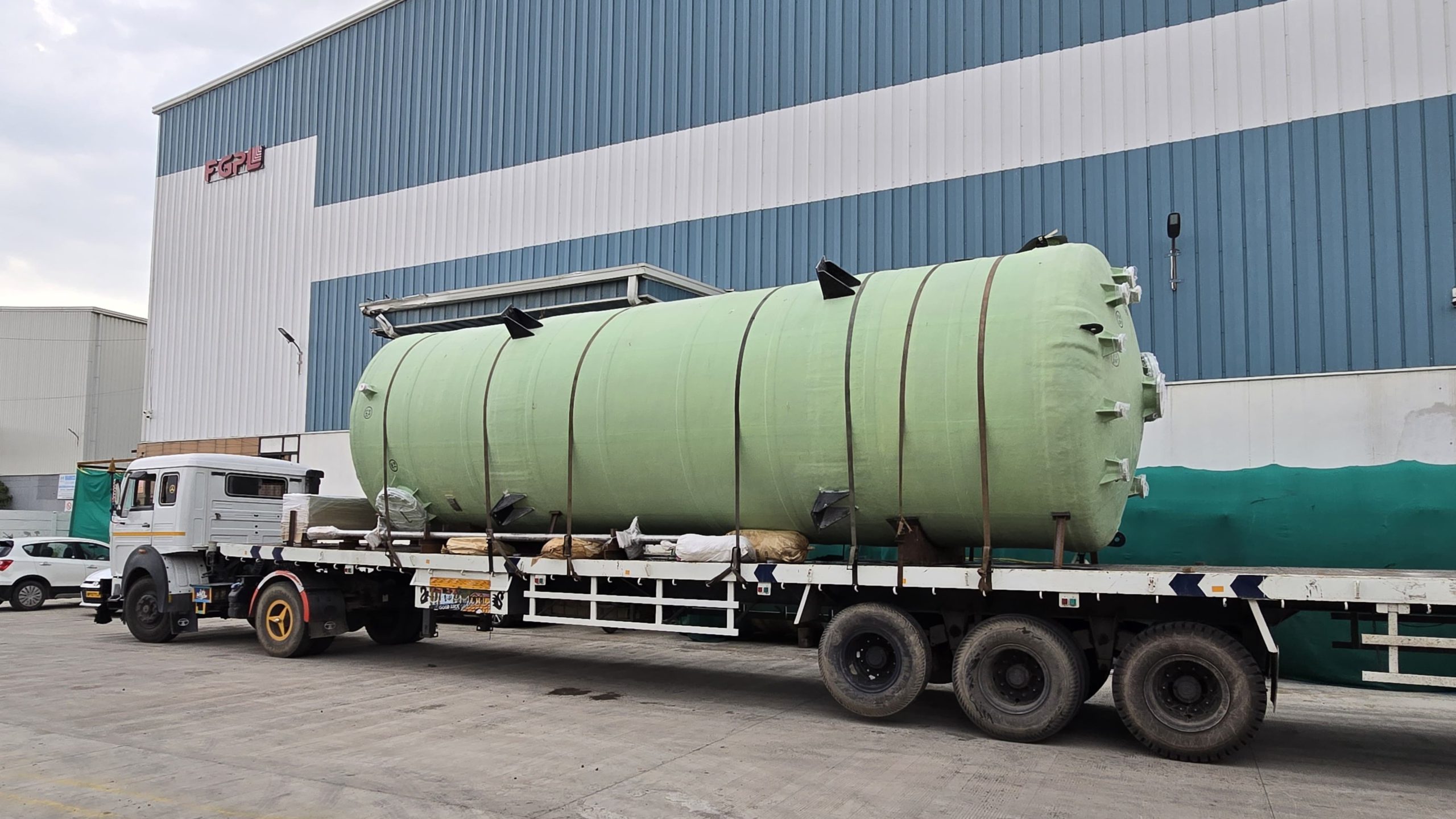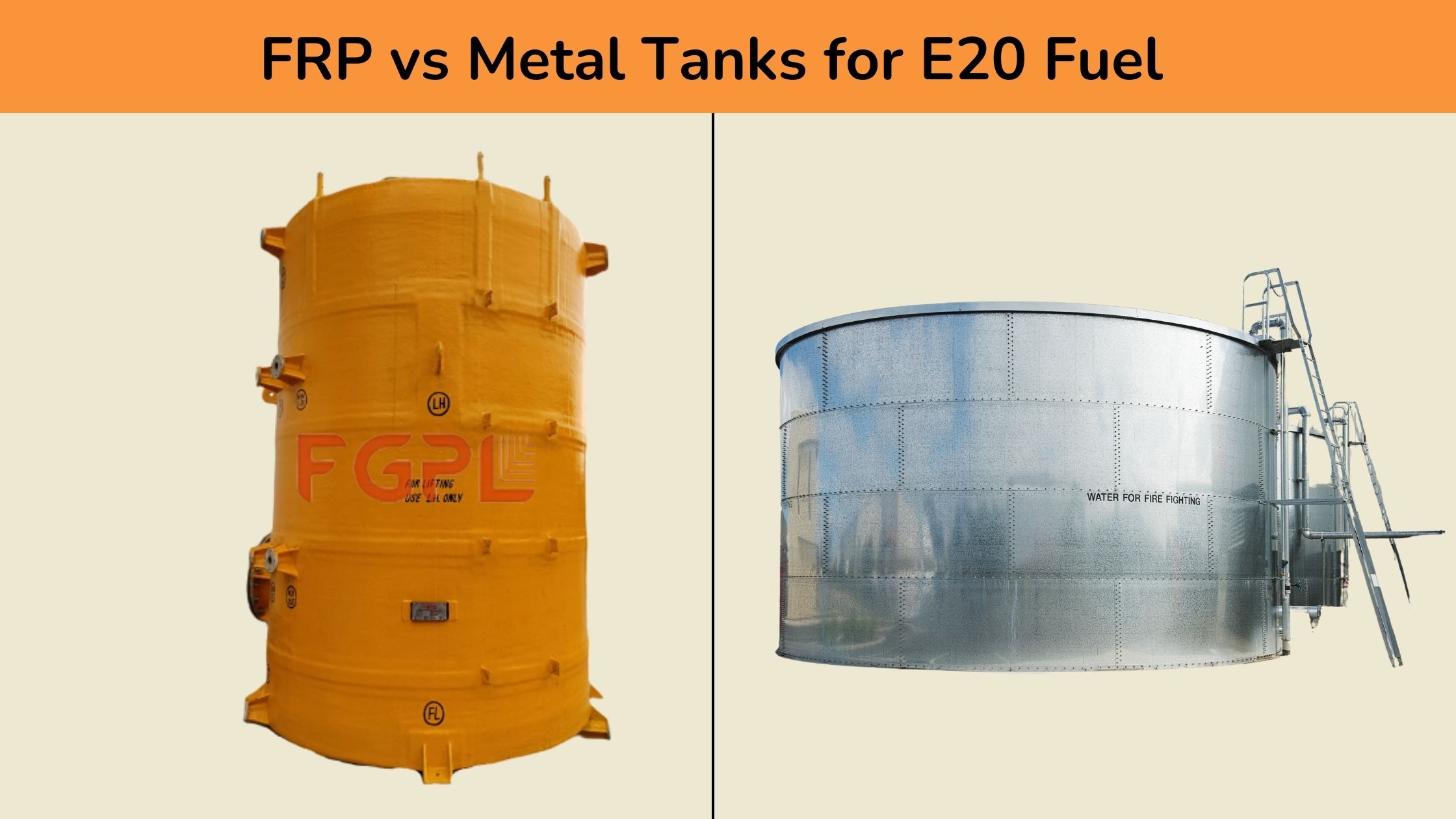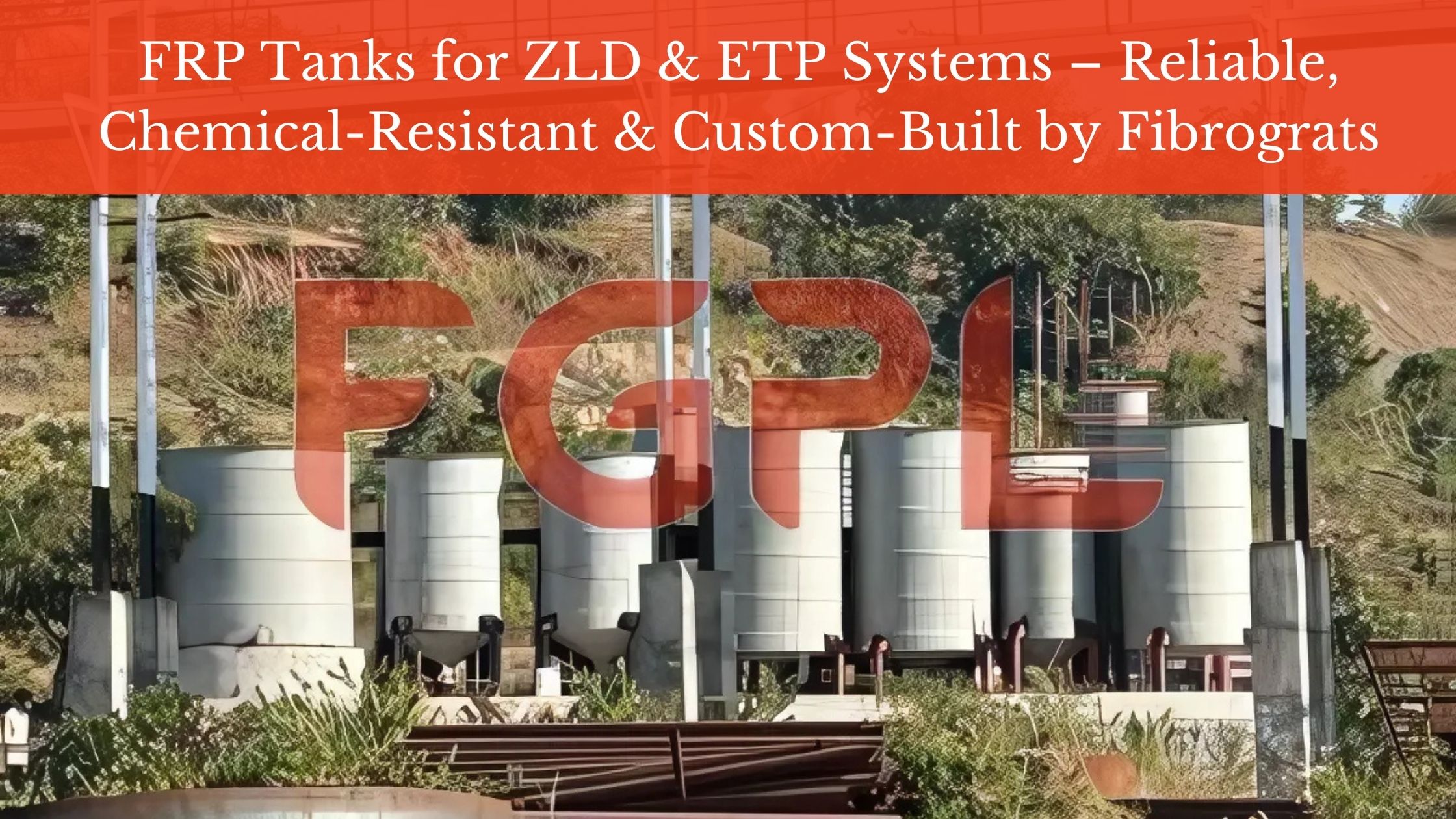Introduction
Hydrochloric acid (HCL) is one of the most commonly used industrial chemicals, playing a vital role in applications like metal refining, water treatment, food processing, chemical manufacturing, and more. Despite its importance, HCL is also one of the most corrosive substances handled by industries. Improper storage can lead to disastrous consequences including leaks, environmental hazards, worker injury, and regulatory violations.
This blog offers a Safe Storage Guide for Acid (HCL) Bulk Tanks, helping businesses understand the critical aspects of HCL bulk tank storage. With the right material, design, and maintenance practices, industries can ensure long-term safety, compliance, and operational efficiency.
Why Hydrochloric Acid Requires Special Storage Considerations
Hydrochloric acid is a highly reactive and corrosive chemical that can degrade metals, plastics, and even concrete over time. Its vapors are hazardous, and spills can result in environmental contamination and severe health risks.
The primary risks associated with poor HCL storage include:
- Corrosion of metal tanks and pipelines
- Fume leakage leading to respiratory hazards
- Chemical reactions with incompatible materials
- Contamination of groundwater or plant environment
Hence, safe HCL bulk tank storage isn’t just a technical necessity—it’s a legal and environmental imperative.
Choosing the Right Material for Hydrochloric Acid Bulk Tanks
The foundation of HCL bulk tank storage is selecting the right material. Traditional steel tanks are not suitable due to their high reactivity with acid. Instead, non-metallic tanks such as FRP (Fiberglass Reinforced Plastic) lined with chemical-resistant resins are the industry standard.
Recommended tank materials for HCL:
- FRP with dual laminate (thermoplastic inner lining such as PVC or PP)
- HDPE tanks (for low concentration storage)
- Rubber-lined steel tanks (less preferred due to maintenance needs)
Why FRP is ideal:
- Corrosion-resistant
- Long lifespan
- Lightweight yet strong
- Customizable based on acid concentration and tank size
- Minimal maintenance compared to metallic options
Fibrograts specializes in manufacturing FRP tanks that are specifically designed for storing corrosive chemicals like hydrochloric acid.
Design Considerations for Safe Hydrochloric Acid Bulk Tank Storage
Designing a bulk tank for HCL is a multi-faceted process that includes structural safety, chemical compatibility, environmental safety, and operational ease.
Key design elements:
- Secondary Containment System: To catch accidental leaks or overflows
- Vapor Scrubber Attachments: For neutralizing HCL fumes
- Proper Venting: To avoid pressure build-up and gas emissions
- Sloped Tank Bottoms: To facilitate complete drainage
- Corrosion-resistant Nozzles and Flanges: For safe inlet/outlet connections
Every tank must adhere to safety standards such as IS 10987, ASME RTP-1, or international chemical storage guidelines depending on the region.
Location and Installation Best Practices
Where and how your tank is installed also plays a huge role in ensuring safe storage for acid (HCL) bulk tanks.
Ideal installation conditions include:
- Well-ventilated area: Away from direct sunlight and heat sources
- Accessible for inspection: Enough space for maintenance and visual checks
- Concrete foundation with acid-proof coating
- Distance from water sources and drains to prevent contamination
Proper installation also includes seismic and wind load analysis if the tank is installed outdoors.
Temperature and Pressure Management
HCL reacts aggressively under high temperature and pressure. While bulk storage typically involves 30–35% concentrated HCl, the material behavior changes drastically with external conditions.
Safety tips:
- Store below 30°C whenever possible
- Use temperature and pressure gauges to monitor conditions
- Avoid mixing hot chemicals with stored acid
- Insulate or shade outdoor tanks
Properly engineered tanks from Fibrograts come with design capabilities to handle such stress factors with ease.
Maintenance and Inspection Schedule
Routine inspection and maintenance are critical to ensuring longevity and safety. A preventive maintenance plan should be in place that includes:
- Visual inspections for leaks, cracks, or discoloration
- Checking for fume escape from joints or valves
- Cleaning and flushing procedures as per MSDS recommendations
- Monthly pH level checks in surrounding areas
- Annual NDT (Non-Destructive Testing) for structural integrity
Neglecting inspection is one of the biggest reasons for tank failure, which can have regulatory and operational consequences.
Handling and Safety Precautions
Training staff and ensuring safety gear availability is non-negotiable when dealing with hydrochloric acid.
Safety protocols:
- Workers must wear PPE: goggles, acid-resistant gloves, boots, and aprons
- Emergency eyewash and shower stations near the tank
- Spill kits and neutralizing agents like sodium bicarbonate readily available
- Clear hazard signage around the tank
- Never allow unauthorized personnel near the tank
These measures reduce the risk of human exposure and chemical accidents.
Environmental Compliance and Legal Guidelines
Every business handling HCL must comply with pollution control norms, fire safety codes, and hazardous material handling guidelines by organizations like:
- CPCB (Central Pollution Control Board)
- SEAC (State Environmental Assessment Committees)
- Factories Act & OSHA standards
- GPCB or other state pollution control boards
Using certified tanks from vendors like Fibrograts ensures easier documentation and approval during inspections and audits.
Why Choose Fibrograts for Hydrochloric Acid Bulk Tank Storage
Fibrograts is a leading manufacturer of high-quality FRP storage tanks customized for harsh chemical environments. Our expertise in handling bulk storage for corrosive chemicals like HCL ensures:
- Tank design compliant with international safety norms
- Resistance to chemical corrosion, UV rays, and mechanical stress
- Reduced maintenance downtime
- Long operational life with excellent ROI
- Installation, commissioning, and post-sales support
With proven use cases across chemical plants, refineries, water treatment plants, and pharma units, we are the go-to choice for safe HCL bulk tank storage in India and beyond.
Conclusion
Storing hydrochloric acid is not a task that should be taken lightly. It demands careful planning, expert material selection, and regular safety oversight. This Safe Storage Guide for Acid (HCL) Bulk Tanks highlights the need for customized solutions that address the chemical’s unique storage challenges.
Investing in the right HCL bulk tank storage solution from a trusted supplier like Fibrograts is not just about safety—it’s about future-proofing your operations, protecting your workforce, and staying compliant with environmental norms.
Looking to upgrade or install a reliable HCL bulk storage system? Get in touch with Fibrograts today.



